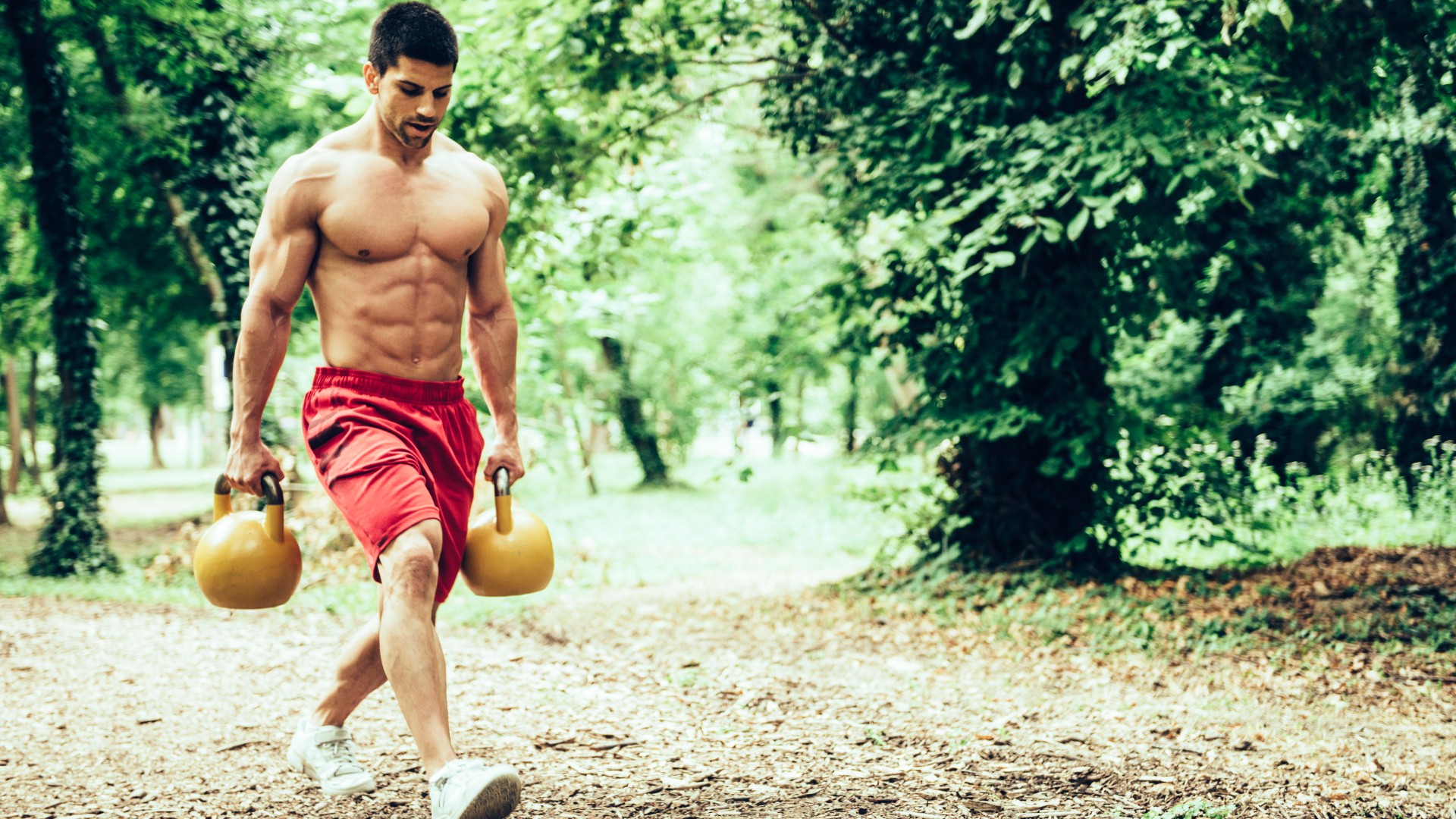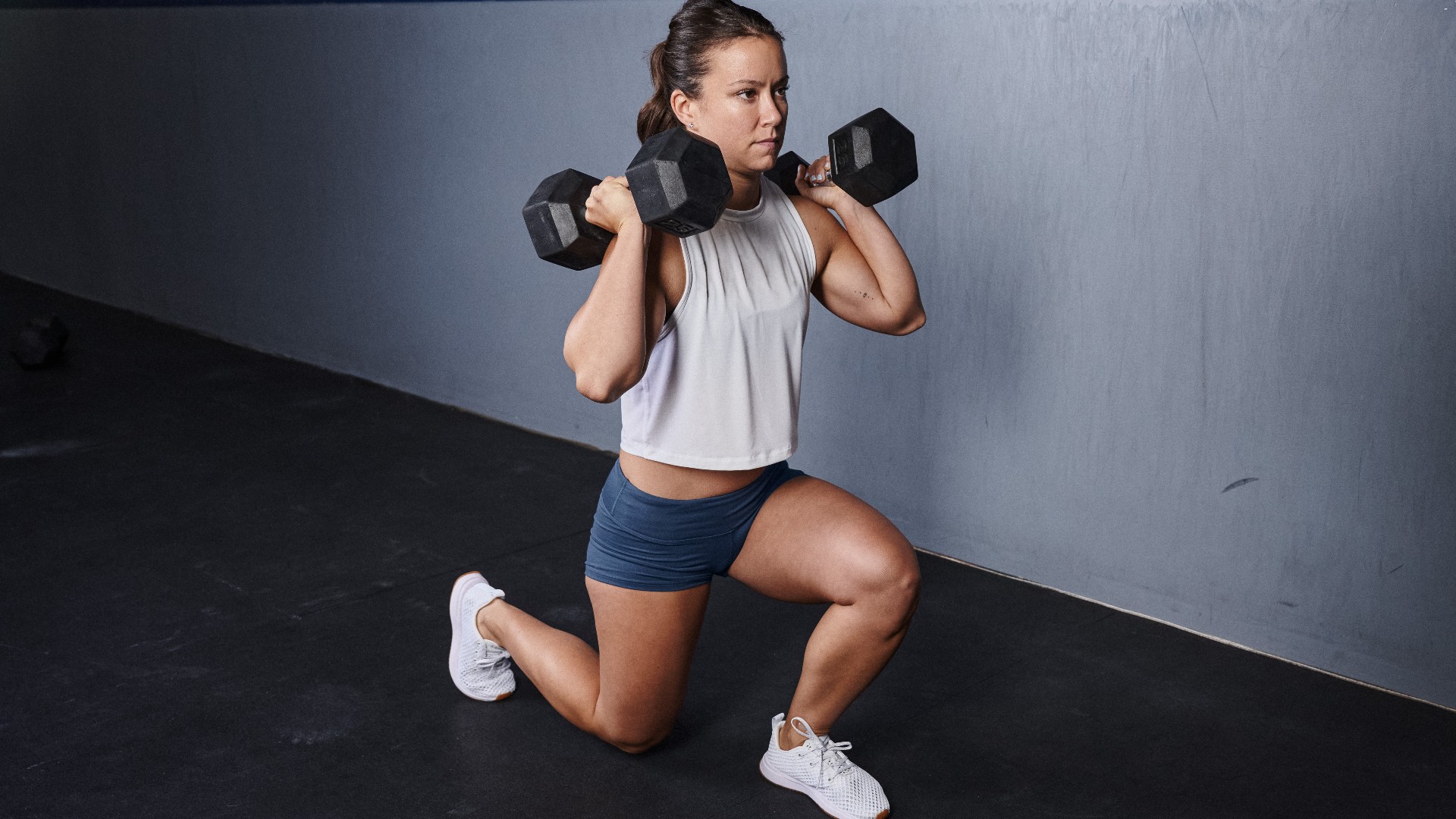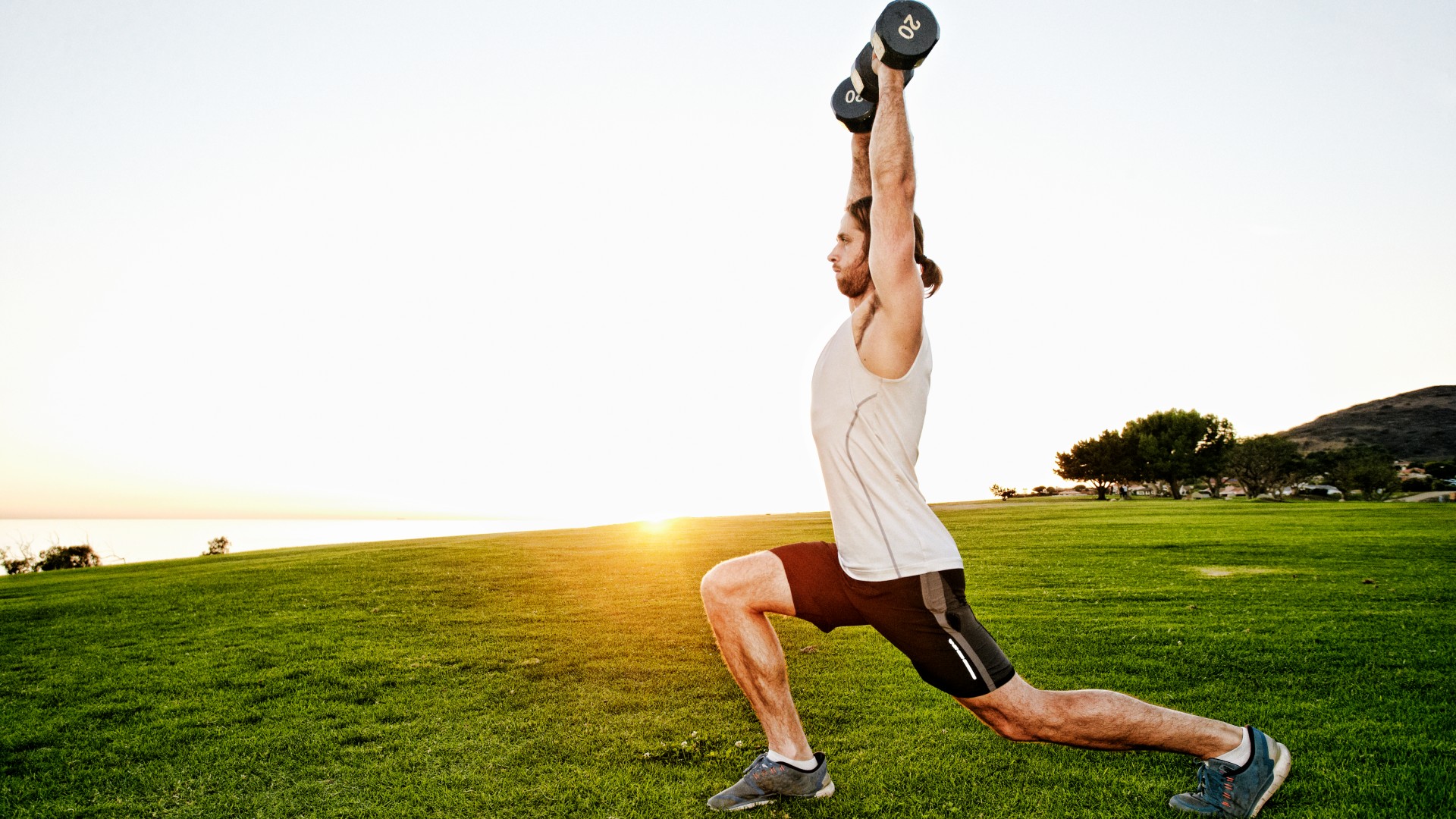
This workout with weights is the perfect way to take 25 minutes and build a stronger more metabolically active body. Despite what you might have been told, not every workout must ramp up the sweat factor to be effective.
You could use one of the best treadmills if you like an indoor workout, or head out into nature and perform this outdoors. You can increase your step count, build mental strength and boost your cardiovascular health without spending hours in the gym.
Below, I cover how to do the walking workout with weights or without them if you have limited equipment on hand. Plus the benefits for your entire body.

Whether walking for weight loss or to build a stronger body, a walking workout can be a low-impact exercise for keeping your muscles, joints and bones robust and atrophy-resistant as you age. Plus, you don’t have to pay to exercise outdoors, you can take this one with you anywhere with minimal kit.
The 25-minute routine below works your core, hip flexors, glutes and legs, and holding weights helps engage your upper body, including your shoulders, upper back and arms.
If nothing else, just 7,000 steps a day over time can have benefits for your overall health, and 25 minutes of walking can help top those numbers up.
What is the 25-minute walking workout with weights?
I recommend holding a set of the best adjustable dumbbells or kettlebells. I wouldn't wear a weighted vest or wrist or ankle weights, and I generally avoid loading the ankles while powerwalking as you’ll increase the impact on your joints. Running with weights, especially if you suffer from joint pain, could exacerbate symptoms.
25-minute EMOM x5 rounds:



- Minute 1: Mixed rack walking lunges x 16-20 reps
- Minute 2: Overhead rack march x 50 seconds
- Minute 3: Farmer’s walk x 50 seconds
- Minute 4: Front rack lunges x 16-20 reps
- Minute 5: Rest
There are two ways to approach this; either opt for a lighter weight and work for maximum reps up to 45-50 seconds, rest for 10-15 seconds, then aim to hit the same reps for the remaining rounds, or, work as written above.
Try to find a weight challenging enough that 16-20 reps feel like a push unbroken. If you need to adjust the reps, do. Perform the reps, then rest for the remainder of the minute.
For the farmer’s walk and rack march, work for 50 seconds for maximum distance. I recommend learning how to do a farmer’s walk with proper form and refreshing how to do lunges before you begin.
Mixed racking means using two different grips on your weights. During mixed rack lunges, position one weight on your shoulder and extend the other arm overhead, swapping halfway, and performing walking lunges. For the front rack lunges (pictured above), rest both weights at your shoulders and lift your elbows to keep them stable as you lunge forward.
Overhead exercises like walks, marches, or lunges engage the upper body, including your core, shoulders, arms, chest and back to help stabilize the weight overhead. Extend your arms overhead holding the weights and keep your arms close to your ears, then begin marching on the spot or make your way forward.
Walking, lunging and marching recruits the hip flexors, glutes, quads, hamstrings and calf muscles. Focus on keeping your spine tall, shoulders down and chest proud.
Benefits of this walking workout with weights
Building lower body strength doesn’t just happen from lifting weights maximally. Heavy squats, deadlifts, and lunges are foundational additions to any strength training regime, and you will need to dial into some key hypertrophy vs strength training principles if building maximal strength or lean muscle mass is your goal.
In my opinion, the benefits of walking with weights are vastly underrated.
Whether you want to safeguard your muscles, bones and joints as you get older or just want to mix it up in the gym, loading your walks creatively can still overload and challenge the lower body muscles, especially if you’re starting out.
Moreover, this workout targets the whole body using a variety of arm positions, and the overhead grips will challenge shoulder mobility and torso strength. That said, you’ll need to train consistently and progressively overload your body as you get stronger to notice results.
When it comes to your metabolism, the more movement you can add throughout the day, the better. Whether that’s standing up during meetings, walking when you’d normally drive, or doing some gardening. This little trick is called NEAT and helps keep your metabolism ticking, which has an accumulated effect on overall calorie burn. Besides, research shows that getting enough time in nature can build mental strength and boost mood, too.
Here’s what 30 minutes of walking per day can do for your body if you don’t believe me.







